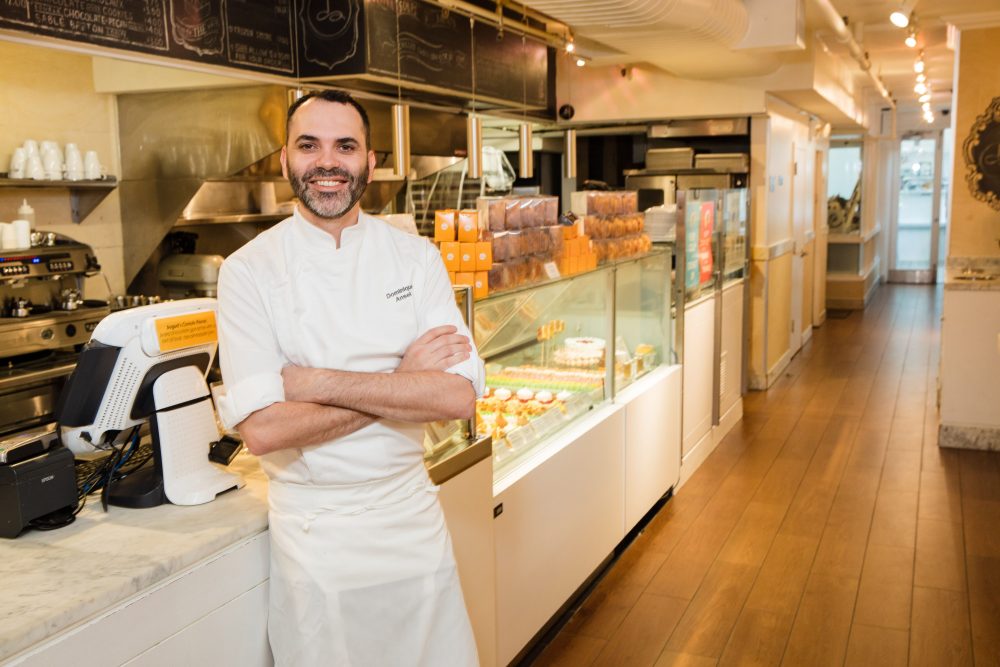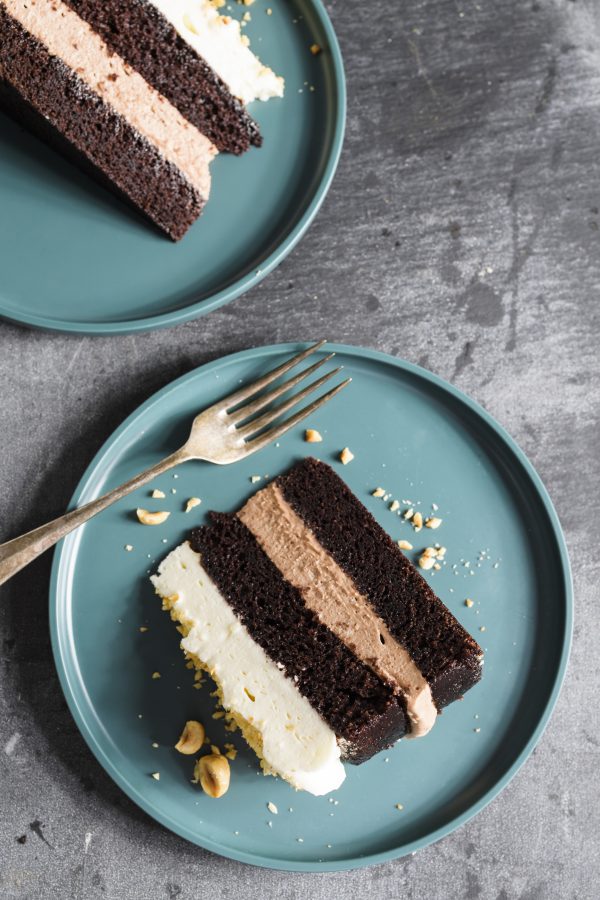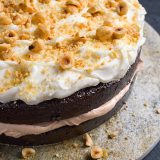The classic American layer cake can be a baking minefield, and much of the challenge begins and ends with the fillings. It might be a frosting that is tooth-achingly sweet, obliterating the more delicate flavor of the cake. Or it might be a buttercream that’s heavy and dense. Or a sloppy whipped cream that doesn’t properly set.
So we revisited this centerpiece dessert with the help of French pastry chef Dominique Ansel, whose latest book, “Everyone Can Bake,” reads like the instructions to a pastry Erector set. Ansel introduced us to a fresh way of thinking about fillings and frostings—and it has changed the way we make cakes.
Ansel’s book offers a mix-and-match take for making baking approachable. His book is divided into basic building blocks: 13 base recipes, 10 fillings, 11 finishes and seven techniques, all inviting personalized shuffling to create custom desserts. It’s a formula that works even in his professional kitchen.

Chef Dominique Ansel introduced us to a fresh approach to layer cakes
“We don’t reinvent recipes every day,” says Ansel, who set off a global craze when he created the Cronut at his New York bakery. “We use the same one and adjust the ingredients, then mix and match to create different textures. This is what I do in my kitchen, so I wanted to bring this to home cook level.”
For our cake, we were immediately drawn to the filling recipe Ansel uses in many of his cakes and éclairs—a whipped ganache. Not only was his whipped white chocolate ganache delicious, it also solved the problems of standard fillings by calling on an ingredient that surprised and impressed us.
A basic ganache is made by pouring hot cream over chocolate, then whisking the melted combination into a smooth sauce that, depending on how much cream it contains, can be thin enough to glaze a cake, or can be chilled until it sets up enough to be shaped for truffle centers or whipped cake fillings.
But Ansel’s ganache also stands apart thanks to the addition of gelatin. “It’s all about the texture,” he says. “If you use gelatin in the right proportions in the right way, you get beautiful textures, but people are not taught that.”
Ansel starts by building flavor early in the process, flavoring the hot cream with mascarpone and honey. He then adds gelatin before blending it all with white chocolate. The ganache is refrigerated overnight, setting up into a thick, gelatinous mixture that then is transformed by being whipped in a stand mixer just before assembling the cake. The mixture goes from thick and dense to having the light, velvety texture of a mousse.
The whipped ganache tastes like a fluffy buttercream without the heft and greasiness of butter, instead lifted by the slight tang of silky mascarpone. And the gelatin gives the filling sufficient structure that it is sturdy enough to stand on its own as a dramatic, creamy middle layer.
With the problem of the filling solved, we turned our attention to the cake itself. We mostly stuck with Ansel’s recipe for his “go-to chocolate cake,” which relies on 1⁄2 cup of cocoa powder for its rich chocolate flavor. But we opted for buttermilk instead of regular milk, which not only enhanced the chocolate flavor, it also made the cake sturdier for handling and stacking.
Once the 9-inch cake was sliced into two layers, we brushed it with an espresso syrup, which complemented the cocoa flavor with a slight, balancing bitterness. It also sealed the exposed, unfrosted edges of the cake to prevent the fine crumb from drying out.
To bump the flavor, we combined half the ganache with Nutella, though any chocolate-hazelnut spread works. The Nutella-flavored cream went between the two soaked chocolate layers, with the rest of the ganache spread across the top. A garnish of chopped hazelnuts provided varying texture and reinforced the nutty flavor in the Nutella layer.

The key to unbelievably velvety ganache? Just add gelatin. After letting the gelatin-infused mixture thicken, whip it in a stand mixer—the whipping transforms it into a frosting that’s light and fluffy, yet sturdy enough for a filling.
Related Recipes
November-December 2020

Sign up to receive texts
Successfully signed up to receive texts!
We'll only send our very best offers - Like a $15 store credit to start.
By entering your phone number and submitting this form, you consent to receive marketing text messages (such as promotion codes and cart reminders) from Christopher Kimball's Milk Street at the number provided, including messages sent by autodialer. Consent is not a condition of any purchase. Message and data rates may apply. Message frequency varies. You can unsubscribe at any time by replying STOP or clicking the unsubscribe link (where available) in one of our messages. View our Privacy Policy and Terms of Service.



